Have you ever found yourself in a situation where a simple error spiraled into an unexpected consequence? It happens to the best of us, and acknowledging our mistakes is the first step toward making things right. In this article, we'll explore some heartfelt letter templates designed to help you apologize sincerely and mend any bridges that may have been burned. So, if you're ready to learn how to express your remorse eloquently, keep reading!
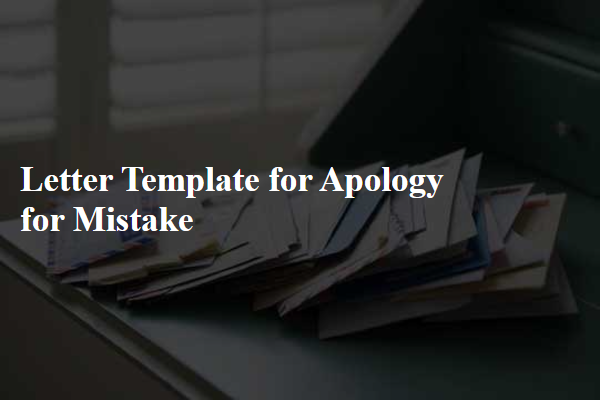
Header Information
Apology letters should contain essential header information for clarity and professionalism. The sender's address, including street address, city, state, and zip code, should be placed at the top right corner. The date of writing should follow, indicating the specific day, month, and year. The recipient's address should be included on the left side below the sender's information, comprising the recipient's name, title, company (if applicable), street address, city, state, and zip code. A respectful salutation should precede the body of the letter, setting a formal tone.
Sincere Apology Statement
Mistakes in communication can lead to significant misunderstandings in business environments. A sincere apology statement should contain acknowledgment of the specific error, such as misinterpreting a project deadline, which can disrupt timelines. Clarity in expressing regret is vital; for instance, stating, "I apologize for the confusion caused by my oversight regarding the March 15 due date" shows ownership of the mistake. Additionally, offering a corrective action, like proposing a revised schedule or seeking input for a solution, demonstrates commitment to remedying the situation. Furthermore, ensuring that the apology is conveyed through an appropriate channel, whether email or face-to-face discussion, adds to the sincerity and effectiveness of the apology.
Explanation of Mistake
Mistakes in communication can lead to misunderstandings, particularly in professional settings, such as email exchanges regarding project deadlines. An example includes the misinterpretation of due dates where a team member, due to a typo in the message, was led to believe that the deadline was two weeks earlier than intended. This error resulted in hastily submitted work that did not meet the expected quality standards. Furthermore, the miscommunication disrupted the workflow of the entire team, creating unnecessary stress and confusion. Recognizing the impact of such mistakes emphasizes the importance of clear and accurate messaging in collaborative environments.
Corrective Actions Taken
Apologizing for a mistake not only shows accountability but also emphasizes the importance of corrective actions taken to prevent future occurrences. A recent incident at XYZ Corporation involved a miscommunication regarding project deadlines, specifically the completion date for the ABC project. This oversight resulted in delays that affected not only internal scheduling but also client relationships, particularly with DEF Industries. To rectify this mistake, XYZ Corporation has implemented a new project management software, Trello, which enhances collaboration and ensures real-time updates on deadlines. Additionally, team training sessions on communication protocols have been scheduled bi-weekly to reinforce the importance of clarity in messaging. These actions aim to restore trust and improve workflow efficiency, ensuring that such miscommunications do not recur in the future.
Closing Remarks and Contact Information
A formal apology letter expresses regret for a mistake made, often emphasizing accountability and the desire to rectify the situation. Apologies can be necessary after misunderstandings, errors in judgment, or miscommunications in personal relationships or professional settings. Including a closing remark reinforces sincerity and encourages future communication. Contact information, such as an email address or phone number, facilitates easy follow-up, demonstrating openness and willingness to discuss the matter further. This element helps clarify the intention of rebuilding trust and maintaining a positive relationship moving forward.

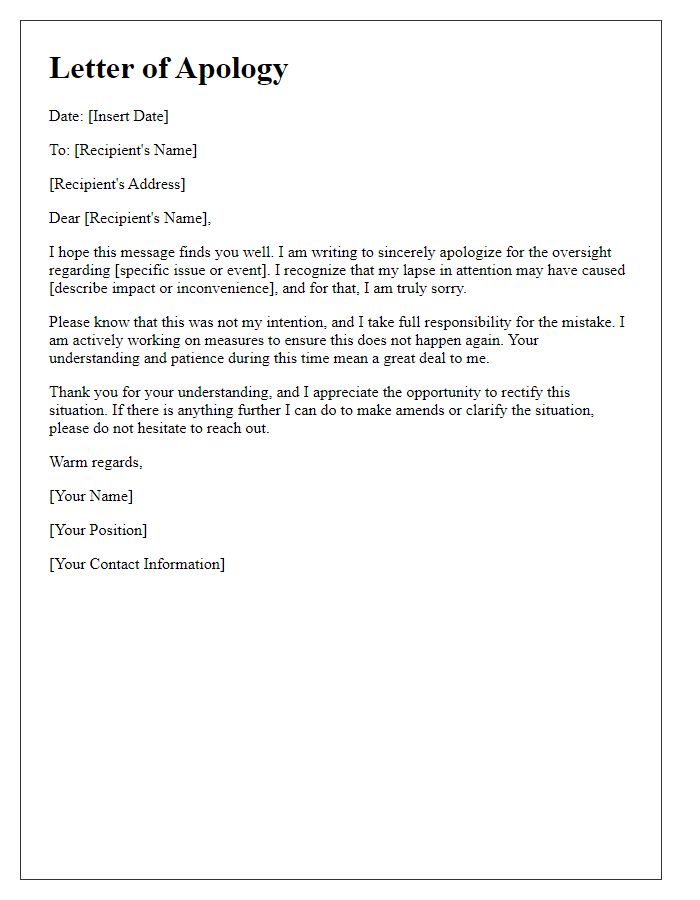
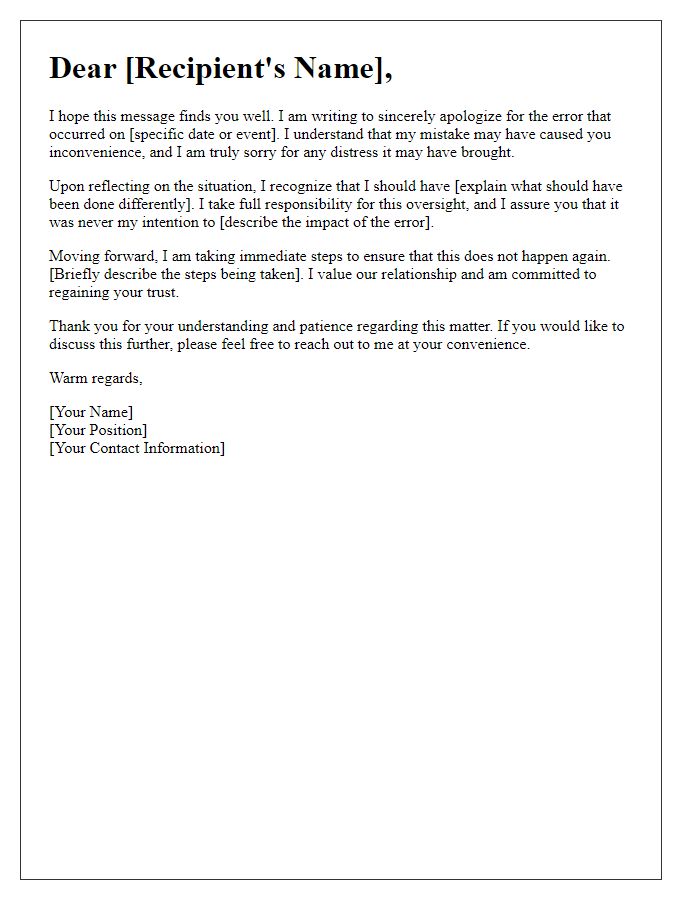
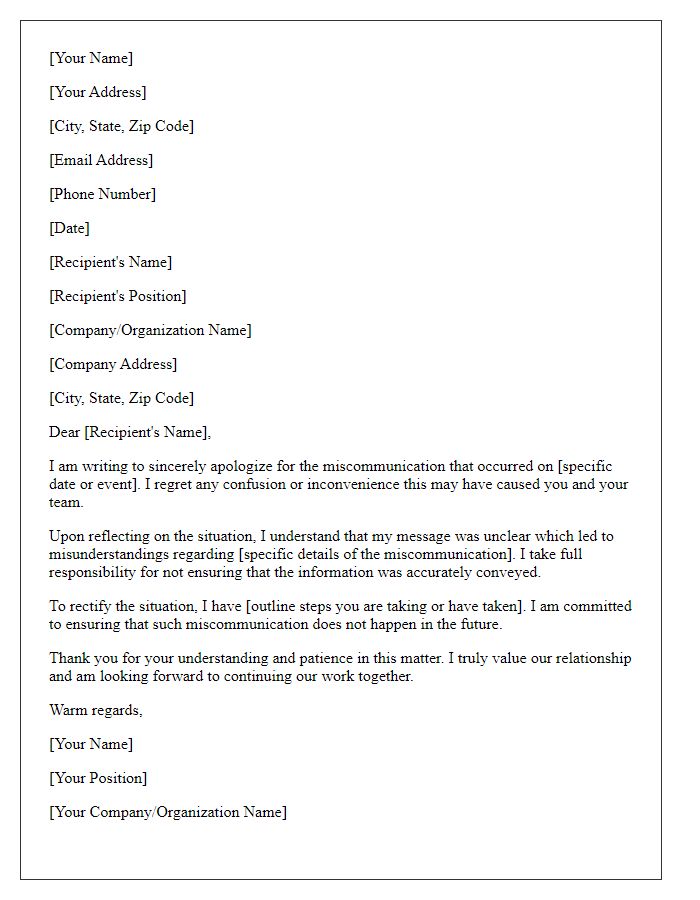
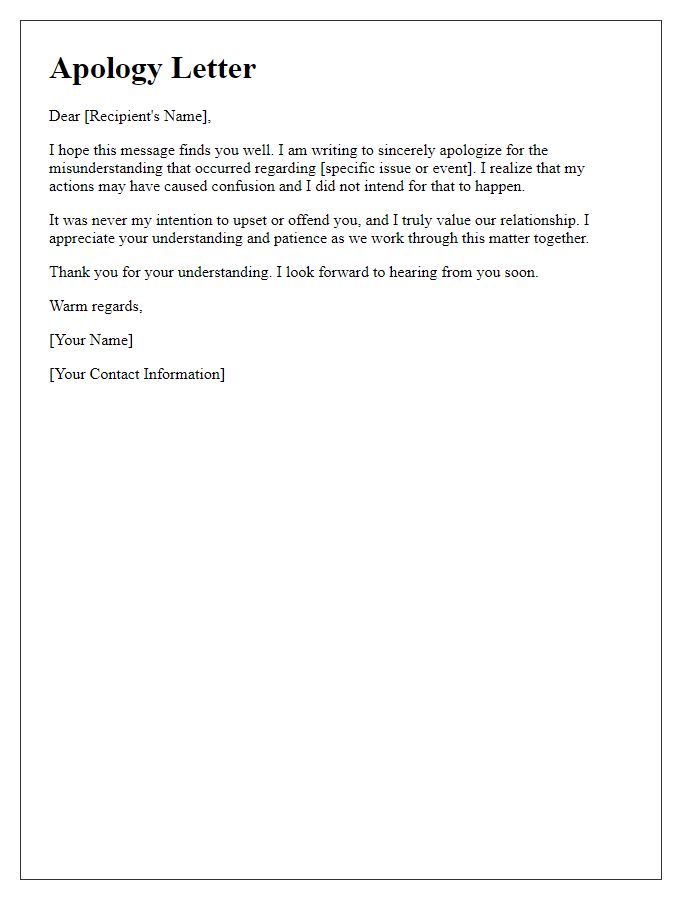
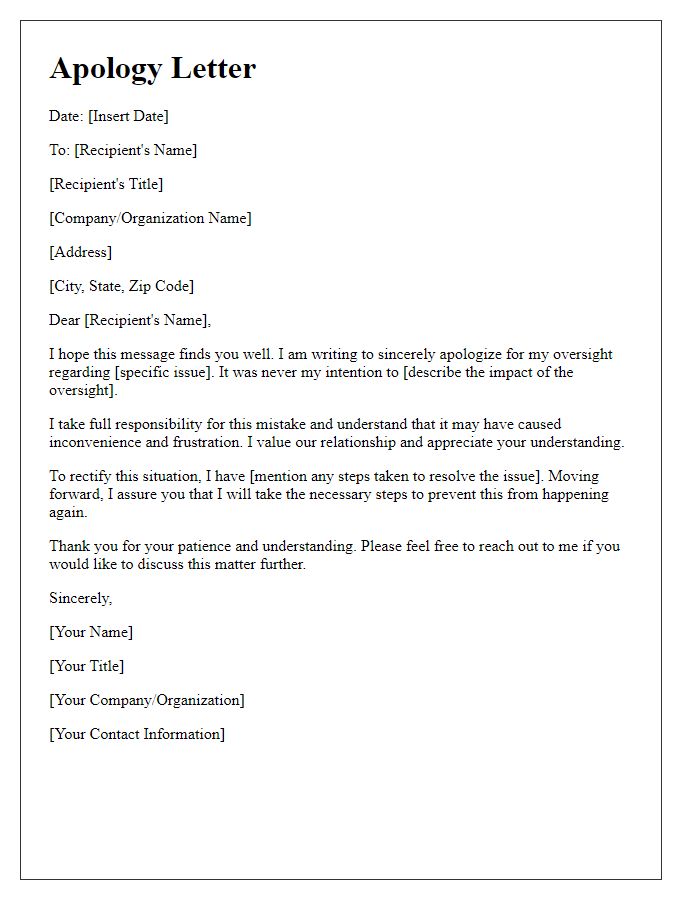

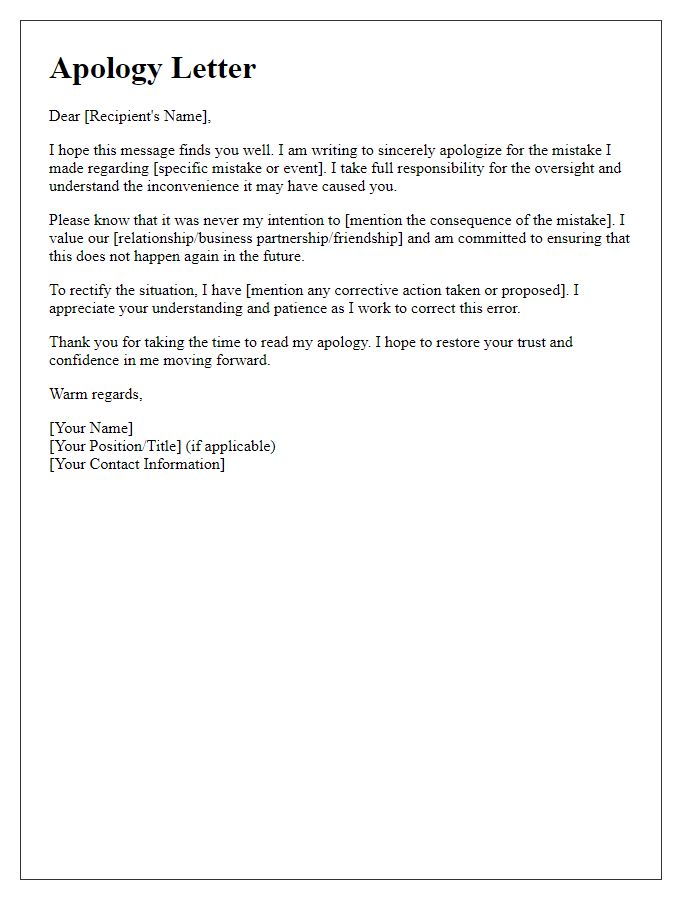
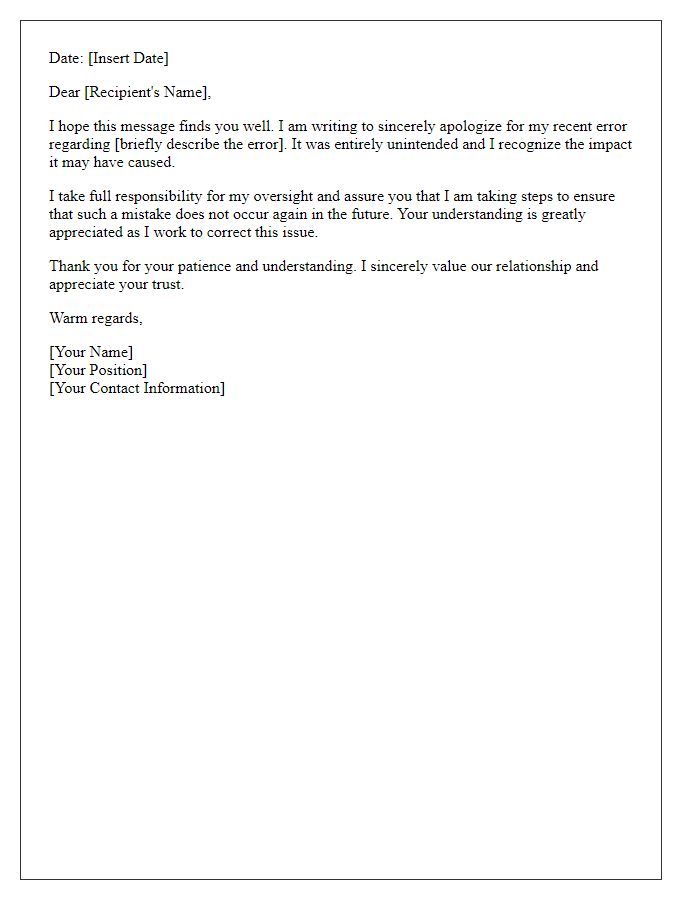
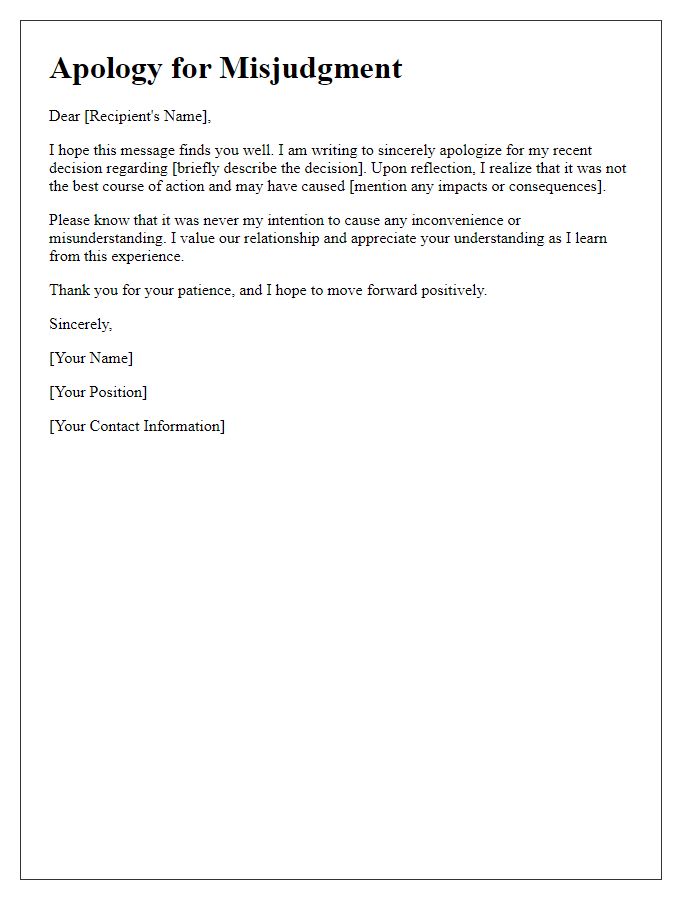


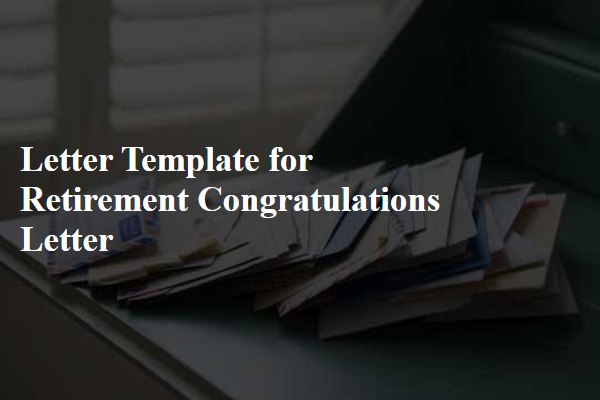
Comments